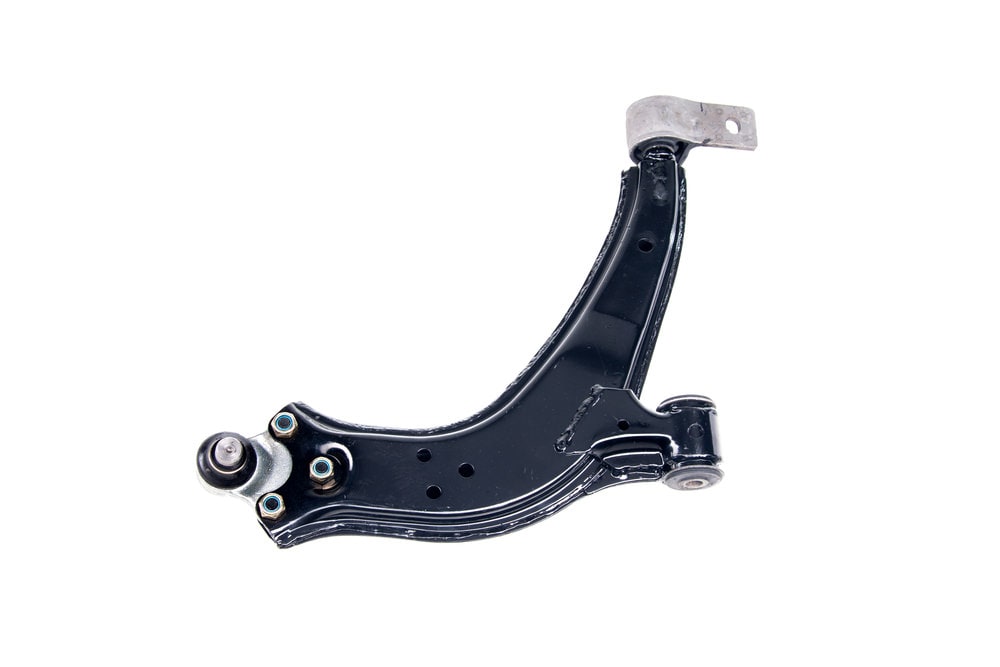

Designers of automotive suspension systems must consider many factors, including the cost, weight, and compactness of the suspension and the handling characteristics they wish to achieve. No design is perfect at achieving all of these objectives but several basic design types have stood the test of time:
- Double wishbone, also known as A-arm
- MacPherson strut
- Multi-link
- Swing arm or trailing arm
- Swing axle
- Solid axle (also called live axle) designs, usually using leaf springs
All of the designs listed above are independent suspension systems, meaning that each wheel can move independently of the others, with the exception of the solid axle design.
Double wishbone suspension
One suspension design that is common on high-performance cars is the double wishbone. In a double wishbone suspension, each wheel is attached to the vehicle by way of two control arms (also known as A-arms). These two control arms are roughly triangular in shape, this shape gives rise to the names “A-arm” and “double wishbone” suspension. The wheel assembly is attached to each control arm at what would be the top of the A formed by each control arm (though the arms are usually approximately parallel to the ground, so this “top” isn’t actually on top); each arm is attached to the vehicle’s frame at the base of the A. As the wheel rises and falls (because of bumps or body roll, for example), each control arm pivots on two bushings or ball joints at its base; there is also a bushing or ball joint at the attachment of each arm to the wheel assembly.
What a wishbone suspension is used for
A typical double wishbone suspension features control arms that are somewhat different lengths, and often the angles of the two when the car is at rest differs as well. By carefully choosing the relationship between the upper and lower control arms’ lengths and angles, automotive engineers can modify the car’s ride and handling. It is possible, for example, to set up a double wishbone suspension so that the car will maintain approximately correct camber (the tilt of the wheel inward or outward) even when the wheel is going over a bump or the car is leaned over in a hard turn; no other common suspension type is as good at keeping the wheels angled properly to the road and thus this suspension design is common on performance cars like Ferraris and sporty sedans such as the Acura RLX. The double wishbone design is also the suspension of choice for open-wheel racecars like those that race in Formula 1 or at Indianapolis; on many such cars the control arms are readily visible as they extend from the body to the wheel assembly.
Unfortunately, the double wishbone design takes up more space than some other suspension types and it is difficult to adapt to a front wheel drive vehicle, so it’s not appropriate for every car or truck. Even some cars that are designed to handle well at high speed, such as the Porsche 911 and most BMW sedans, employ designs other than the double wishbone, and some performance cars such as the Alfa Romeo GTV6 use the double wishbone on only one pair of wheels.
One terminology issue to note: certain other suspension systems such as the MacPherson strut suspension feature a single control arm; this control arm is sometimes also called a wishbone and the suspension might therefore be considered a “wishbone” system, but most people who use the term “wishbone” are referring to the double wishbone setup.



